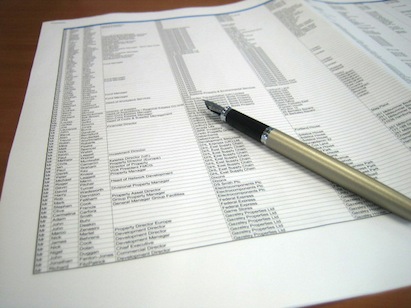Call me a geek but this is a topic I get all revved up about. Or call me lazy because spreadsheets save so much time and effort, using them feels like I’m cheating or loafing. Really I’m not. Spreadsheets make me efficient, and in my way of thinking, efficiency equals profit.
The reason I dove so deeply into Microsoft Excel during the early 1990s was because I couldn’t stand the commercial software I purchased. I hate wasting time or money, especially money, and so much of the software I bought did both expertly. We all want to simply crank up our computer, open the program, and get instant results. But commercial software offered 50 things I didn’t care about and, for the one or two features I really wanted, the program made me claw through a rat’s maze to extract the answers. So in my frustration I began writing my own small programs in Excel and happily haven’t looked back.
From what I gather in my dealings with builders and designers, our industry underutilizes spreadsheets. I think there are three main reasons:
1. Computers can be intimidating.
2. Many people don’t understand what a spreadsheet is or what a spreadsheet can do.
3. Most people don’t want to invest in a learning curve.
I was at a builder’s association meeting recently discussing upcoming classes, and a fellow board member piped up, “I used to be petrified of Excel. Then I took Tim’s one-and-a-half-hour introductory class, and now I love it and use it all the time. For example I made a spreadsheet to calculate square footages on plans. What used to take a half hour now takes five seconds.”
Another board member half-joked, “I need a class in how to turn on my computer.”
Anxious moments
Here’s an example of the most common spreadsheet, the cost estimator. If you’ve ever done a cost estimate using pencil and paper, reading this paragraph may trigger anxiety.
Every builder is painfully aware of the instances when, after you’ve written out your bid and worn your fingertips to a nub on calculator keys, you discover a typo on a unit price. You find a second error in your estimate column. Maybe you figured out a way to do a task using fewer hours or suddenly realize you need 41 yards of concrete instead of 50. So you go back to your paper—now with an eraser—change the numbers, and recalculate the entire column. A couple days later and 30 minutes before the bid is due, you get a frantic call from your concrete supplier who apologizes extravagantly because their cost on cement just went up $3 a ton, which boosts their delivered price to you by $5 a yard. You race back to the eraser and calculator sweating cannonballs and hoping that you’ll be able to revise everything, now within 21 minutes, and that your leather-tip fingers don’t inadvertently press a wrong button.
I haven’t researched it, but I’ve got to believe that the above example was the very impetus for the invention of spreadsheets way back when. Once you get your cost estimate created in a spreadsheet, all you have to do is re-enter the number you want to change and, bang, the entire sheet is recalculated for you, including the tax and profit multipliers, correctly and instantly.
What’s great about this software is that most anyone can do it. You don’t need to know computer programming. To create a basic version of the spreadsheet to the right, you’d only have to know four simple equations and a few commands such as fill, copy, and paste.
Once you get your feet wet, you’ll find many other applications for spreadsheets. I’m to the point now where if I need to repeat a calculation, rather than do it using throwaway keystrokes on my calculator, I make a quick spreadsheet. Here are some of the applications for which I use spreadsheets, and ones you might also consider.
Time card

I keep all my billable time on a spreadsheet. I created this product after sharing an office with an attorney who, in 2004, was still using paper and pencil to record his time. I was using a proprietary program that caused me more grief than it helped. I knew I could do better. My spreadsheet handles time calculations as well as normal record keeping. And the nice, neat printed report gets attached to an invoice.
Customer database

I do about 100 engineering jobs a year. With each project, I track customer billing info, job address, job owner, and cost. I made a spreadsheet that not only stores this data; it also prints a folder label and a one-page summary that goes on the back flap of the job’s file folder. Microsoft Excel has powerful database features built-in that allow sorting and filtering with a click or two.
Pro forma

A pro forma calculates a venture’s expected profit—in other words, income less costs. The pro forma I developed handles land development and rentals, but any venture could be applicable. Excel comes with powerful graphing functions that can show income and expenses so you see at a glance what the numbers indicate.
Standard contract
I use a spreadsheet for my standard engineering contract. The upper part is a cost estimator similar to the first example at left. The bottom part contains contractual verbiage and signature lines in a text box. What makes this so efficient is that I only write boilerplate once and store it in a separate text box outside the printed area. Modifying a specific contract is as simple as copying and pasting clauses from one text box to the other. The final version prints on one 8.5-inch by 11-inch page.
I have spreadsheets for all manner of technical calculations, including a stair calculator that handles both circular and straight. I even migrated my technical callouts and specifications from Microsoft Word to Excel because I find it easier to deal with Excel’s rows and columns than Word’s tables.
That’s a small sample of what spreadsheets can do. Regarding fear of computers or avoidance of learning curve, my best advice is get over it and jump in. That’s how I started and so can you. Computers and software are tools, just like a saw or drill, so the sooner you figure out how to use them, and do so efficiently, the sooner you’ll be reaping rewards. And if you’re not a great self-learner, sign up for a class. In my neck of the woods, very affordable Excel classes are offered regularly by the community college, the builder’s association, through private individuals, and the economic development agency.
Lastly, once you become proficient, just like with cell phone apps, there is a global market for spreadsheet templates. If you’re going to the trouble to create a nifty spreadsheet, why not sell it to the world? It’s perfectly legal, will save someone else time, and put dollars in your pocket.
Tim Garrison is an award-winning author, and founder of ConstructionCalc Excel-Based Software. He welcomes correspondence via BuildersEngineer.com.
















